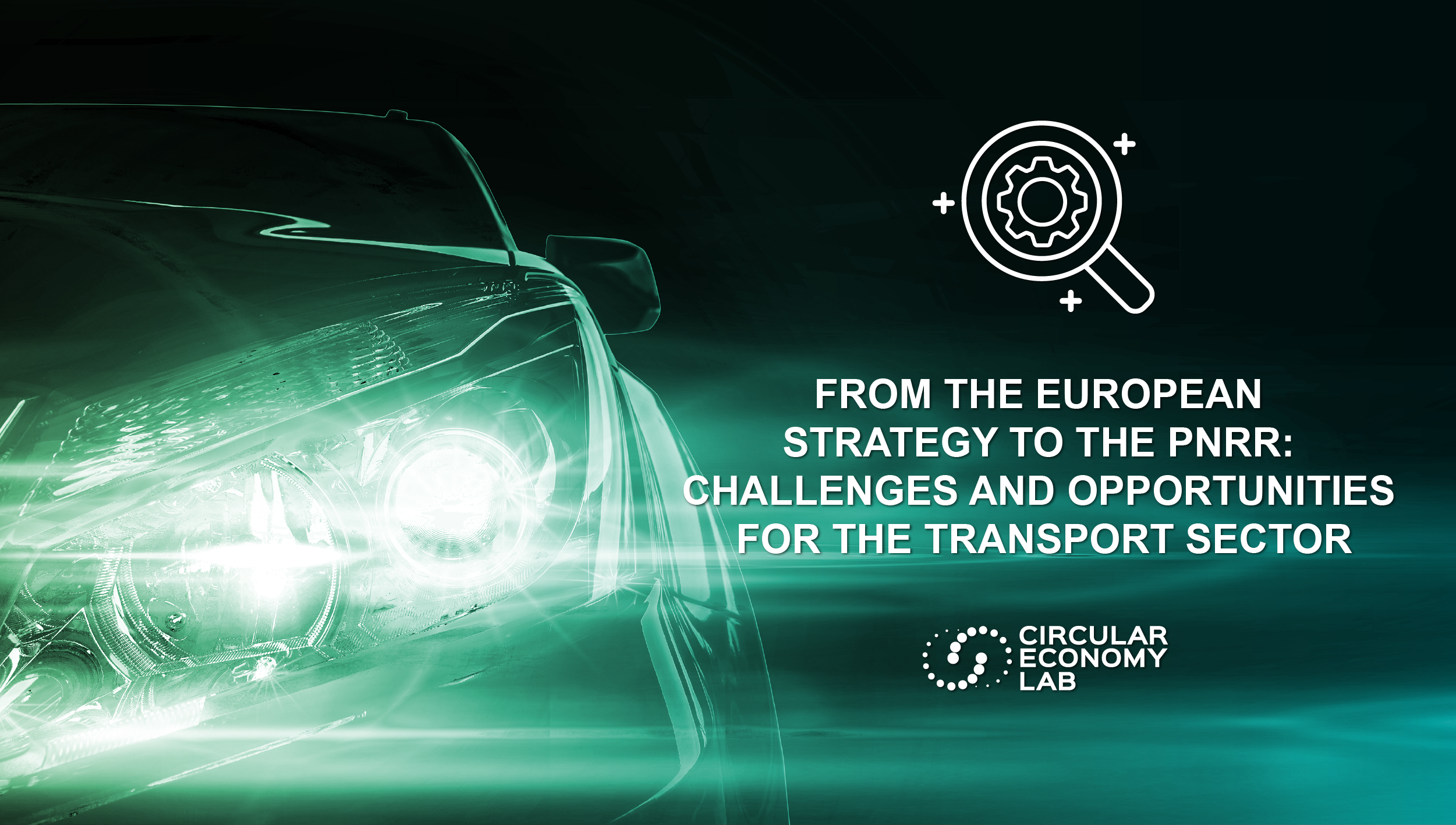
From european strategy to PNRR: challenges and opportunities for the transport sector
Reducing emissions through a sustainable, smart and resilient transport system: this is the goal of the 'Strategy for Sustainable and Smart Mobility' envisaged by the European Green Deal to achieve complete climate neutrality by 2050, also through a green and digital transformation of the transport sector. Features - those of sustainability, digitalisation and resilience of the sector - that it is worth to examine in detail in order to anticipate the concrete effects that they will have in the various production sectors.
Sustainable, smart, resilient: the transport of the future according to the European Strategy
Making transport sustainable will mean, in concretely, promoting the spread of zero-emission vehicles, ships and aircraft, together with the use of renewable fuels and related infrastructure (e.g. by installing public charging points). From the point of view of urban and interurban mobility, moreover, a significant growth in high-speed rail traffic and the development of further cycling infrastructure is desirable, just as rail traffic itself will make goods transport more environmentally friendly.
The smart transformation of mobility, thanks to technological innovation and digitisation, will lead to connected and automated multimodal mobility, allowing passengers to buy tickets for multimodal journeys and goods to move smoothly from one means of transport to another. Finally, the promotion of innovation and the use of data and artificial intelligence will enable the widespread adoption of drones and unmanned aircraft, which will go hand in hand with the development of a common European mobility database.
The challenge of making the sector more resilient - the third and final objective of the European Sustainable Mobility Strategy - can be met by strengthening the single market, stepping up efforts and investments to complete the trans-European transport network and helping the sector through increased investments, both public and private, in fleet modernisation in all transport modes. In the future, resilience will increasingly rhyme with fairness and in this context, affordable fares can be expected in all regions and for all passengers, including those with reduced mobility or living in rural and peripheral areas.
Regulatory developments and NRRP opportunities
At national level, the National Recovery and Resilience Plan (NRRP) and its integration with the National Plan of Complementary Investment makes a large amount of resources available for mobility to accompany this transformation process.
With the publication of the Report 'Investments, Programmes and Innovations for the Development of Sustainable Mobility in Metropolitan Cities', the Ministry of Infrastructure and Sustainable Mobility (Mims) has defined the strategy for achieving an improvement in the quality of life in cities, which includes, in order, the reinforcement of sustainable local mobility infrastructure and services through an investment in Mass Rapid Transport (3.6 billion), the ecological renewal of buses and an increase in the quantity and quality of Local Public Transport (Tpl) (3 billion), the development of cycle paths (200 million) and the use of digital technologies for the various mobility services.
Also noteworthy are the actions taken to stimulate a paradigm shift in mobility towards the Mobility as a Service (MaaS) model, which envisages the integration of several public and private transport services that can be combined into a single digitally accessible service according to the needs of the individual user. Milan, Naples, Rome, Bari, Florence and Turin have been identified as lead cities for the experimentation of MaaS services and are recipients of state subsidies amounting to approximately EUR 57 million.
In this context, the transformation of mobility according to the criteria of sustainability, resilience and digitalisation will be able to take place thanks to the coexistence of a clear European strategy and investments adequate to the relevance of the objectives to be achieved, and not least thanks to a regulatory evolution (such as Directive 2000/53/EC on the management of end-of-life vehicles) places the Automotive sector more and more at the center as the fulcrum of change in a digital and green key of the wider transport sector.